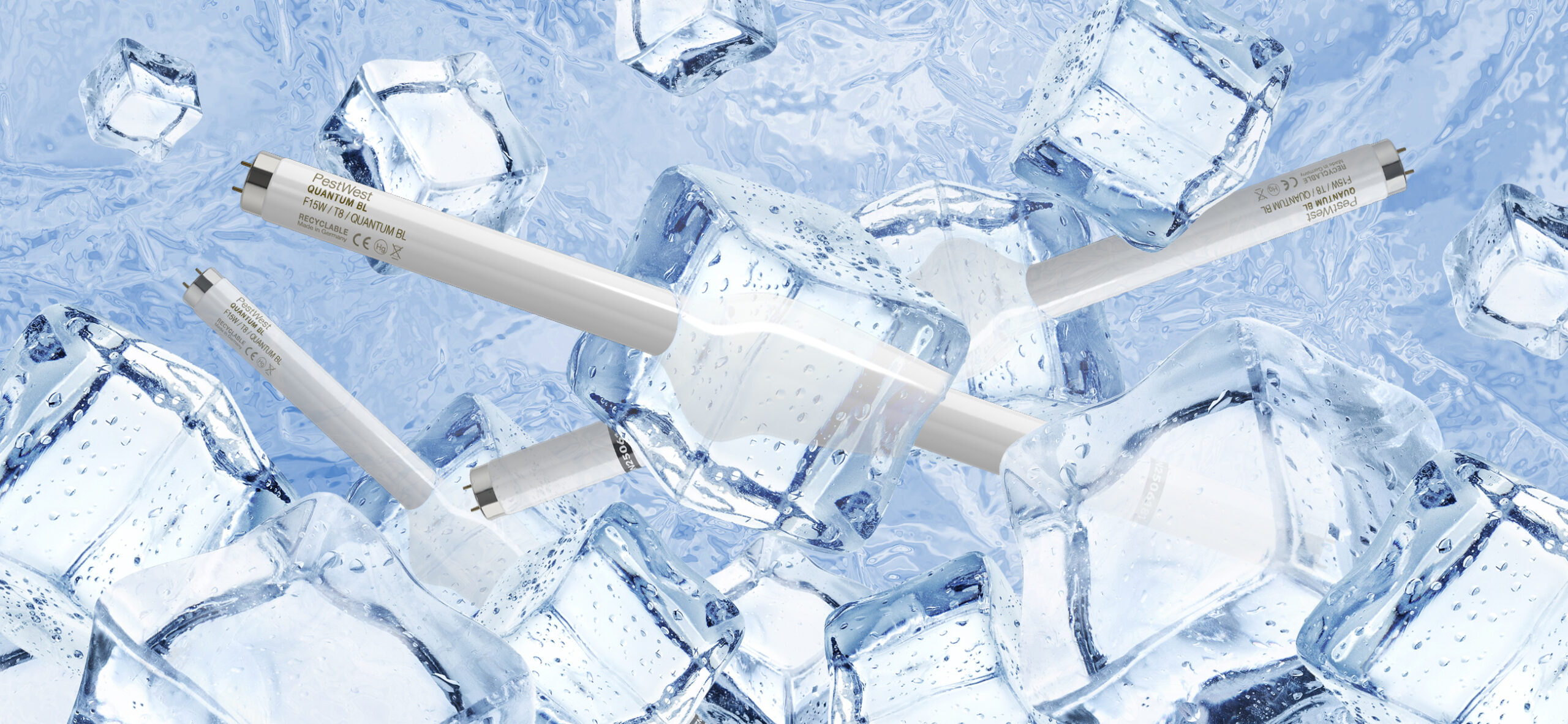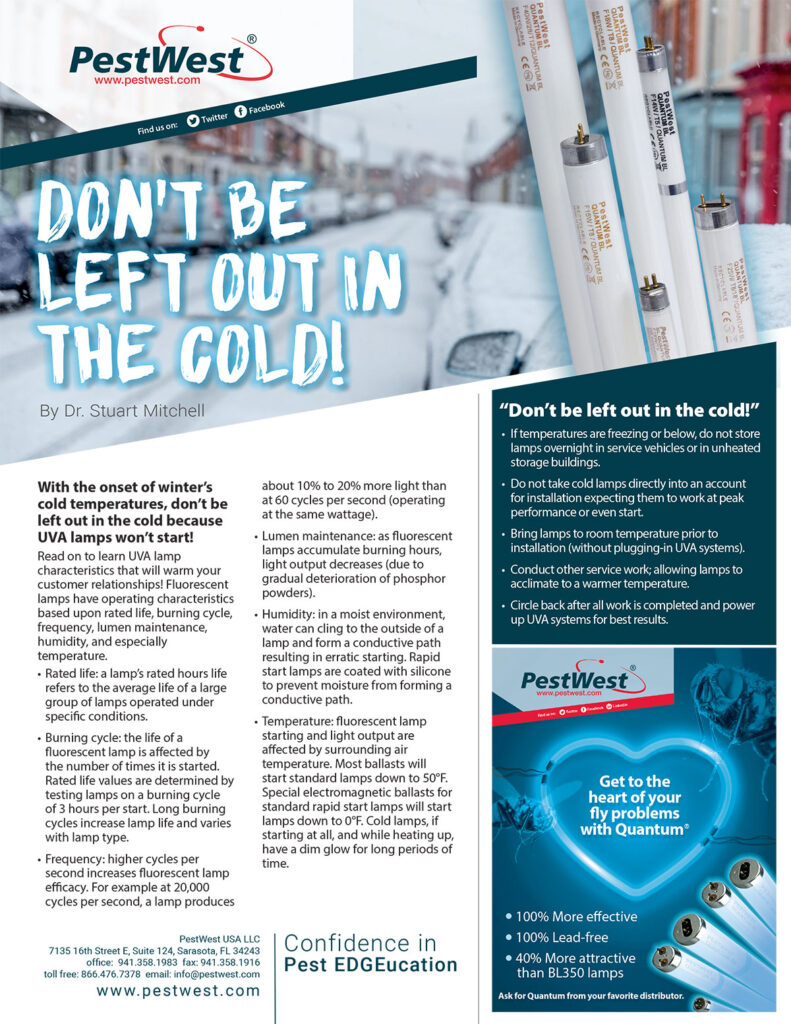By Dr. Stuart Mitchell
With the onset of winter’s cold temperatures, don’t be left out in the cold because UVA lamps won’t start!
Read on to learn UVA lamp characteristics that will warm your customer relationships! Fluorescent lamps have operating characteristics based upon rated life, burning cycle, frequency, lumen maintenance, humidity, and especially temperature.
- Rated life: a lamp’s rated hours life refers to the average life of a large group of lamps operated under specific conditions.
- Burning cycle: the life of a fluorescent lamp is affected by the number of times it is started. Rated life values are determined by testing lamps on a burning cycle of 3 hours per start. Long burning cycles increase lamp life and varies with lamp type.
- Frequency: higher cycles per second increases fluorescent lamp efficacy. For example at 20,000 cycles per second, a lamp produces about 10% to 20% more light than at 60 cycles per second (operating at the same wattage).
- Lumen maintenance: as fluorescent lamps accumulate burning hours, light output decreases (due to gradual deterioration of phosphor powders).
- Humidity: in a moist environment, water can cling to the outside of a lamp and form a conductive path resulting in erratic starting. Rapid start lamps are coated with silicone to prevent moisture from forming a conductive path.
- Temperature: fluorescent lamp starting and light output are affected by surrounding air temperature. Most ballasts will start standard lamps down to 50°F. Special electromagnetic ballasts for standard rapid start lamps will start lamps down to 0°F. Cold lamps, if starting at all, and while heating up, have a dim glow for long periods of time.
- If temperatures are freezing or below, do not store lamps overnight in service vehicles or in unheated storage buildings.
- Do not take cold lamps directly into an account for installation expecting them to work at peak performance or even start.
- Bring lamps to room temperature prior to installation (without plugging-in UVA systems).
- Conduct other service work; allowing lamps to acclimate to a warmer temperature.
- Circle back after all work is completed and power up UVA systems for best results.






